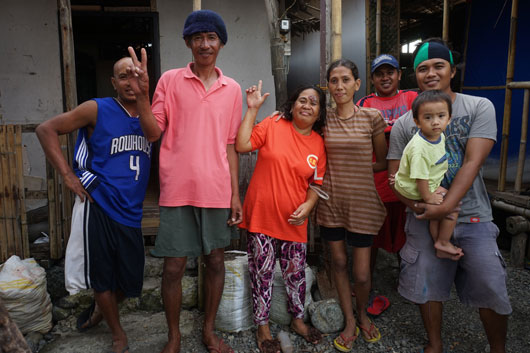Following the devastating typhoon in the Philippines in November, ET staff member, Gregg Butensky, initiated a fundraising effort to bring assistance to the people of Aklan on the island of Panay. Gregg has strong connections in Aklan having established a public lending library there over 15 years ago.
Earlier this month Gregg travelled to the region to ensure that the $10,000 raised is used in the most effective way possible. He’s providing the following dispatches for his donors, republished here for ET readers.

As I mentioned earlier, in Kalibo and Numancia, you have to look carefully to see the effects of the typhoon. That doesn’t mean that they aren’t there. For example, fruit – normally plentiful – is rare due to the virtual annihilation of fruit trees. The price of fish is high due to scarcity. The cost of building materials has spiked.
In some areas, however, the destruction is immediately evident. One day I took a ride to New Washington – situated along a narrow peninsula to the east of Kalibo. In one area in particular, most houses were damaged or completely destroyed. These houses are very near the water.
A sea wall had been wiped out by a previous typhoon and never replaced (more unfulfilled promises from the Government). On the day I was there it was a bit windy. That was enough for the surf to breech what was left of the sea wall and spray me as I rode by on the main road.
I wandered around the damaged houses and was somewhat taken aback when people emerged from structures that didn’t appear habitable. Here, as with everywhere I’ve been, the people seem incredibly resilient. They appreciate the attention of a foreign visitor and eagerly pose for photos, smiles on their faces.
The next day I took a bus four hours south to visit friends at the opposite end of the island. The route cuts right through the middle of the island, winding through hilly terrain. The friend I was going to visit attempted this route the day after the typhoon but didn’t make it through.
Along the way I saw ravaged mountain sides. There were large areas with asymmetrical palm trees. Once mighty bamboo bent in half. Crumpled cable towers. I saw a whole row of electrical poles on their sides in the rice fields, in places, the wires draped over metal rooftops. A school completely missing its roof. Ditto a church.
Again I was struck by how much damage is still evident 2-1/2 months after the typhoon. Imagine a church or a school with no roof. Repair is essential and doesn’t hinge on the economic condition of a single family. And yet the money for repairs just isn’t there.
Imagine that simple homes here can be built in one to two weeks. And yet 2-1/2 months after the fact, people are living in half-collapsed houses or in improvised shelters. The need is monumental. We do what we can.
Read Ethical Traveler's Reprint Policy.
